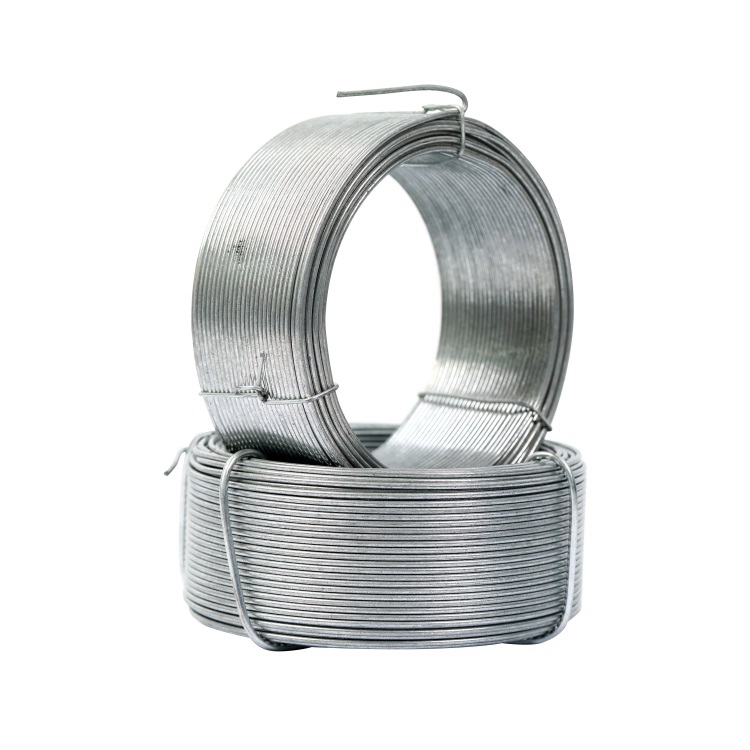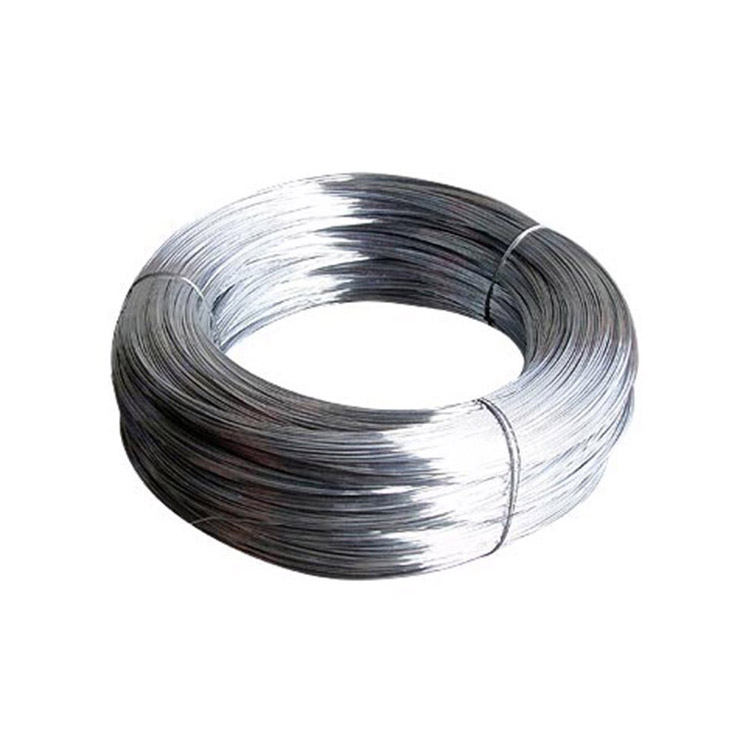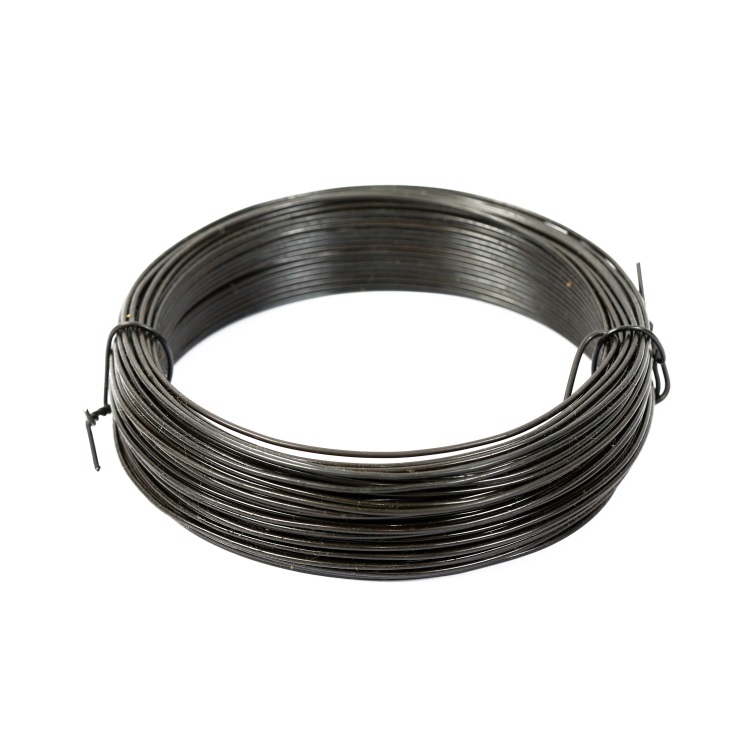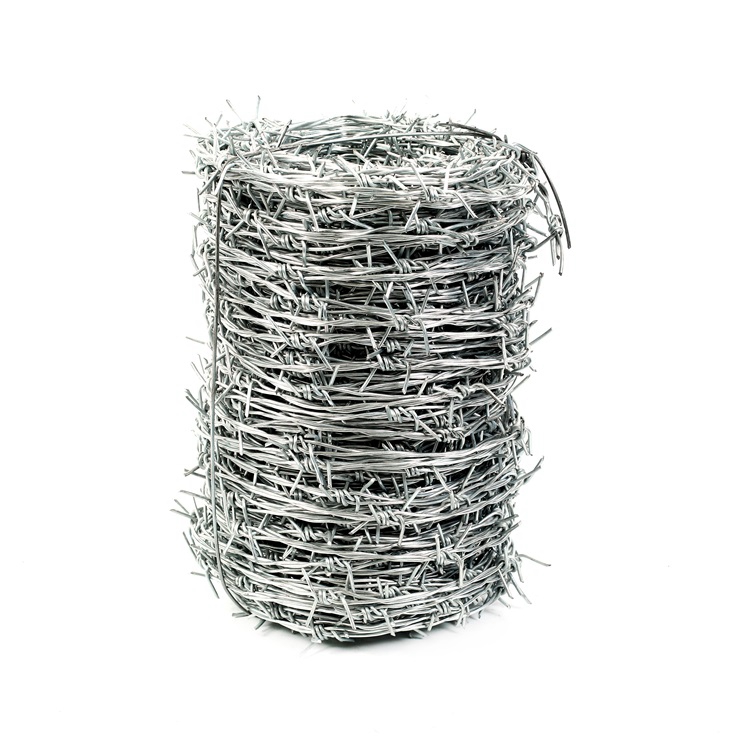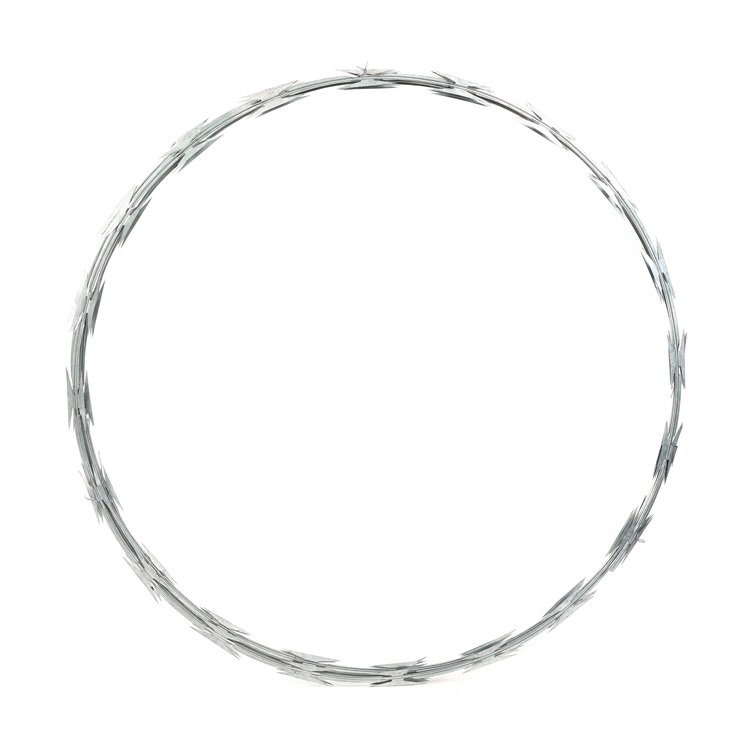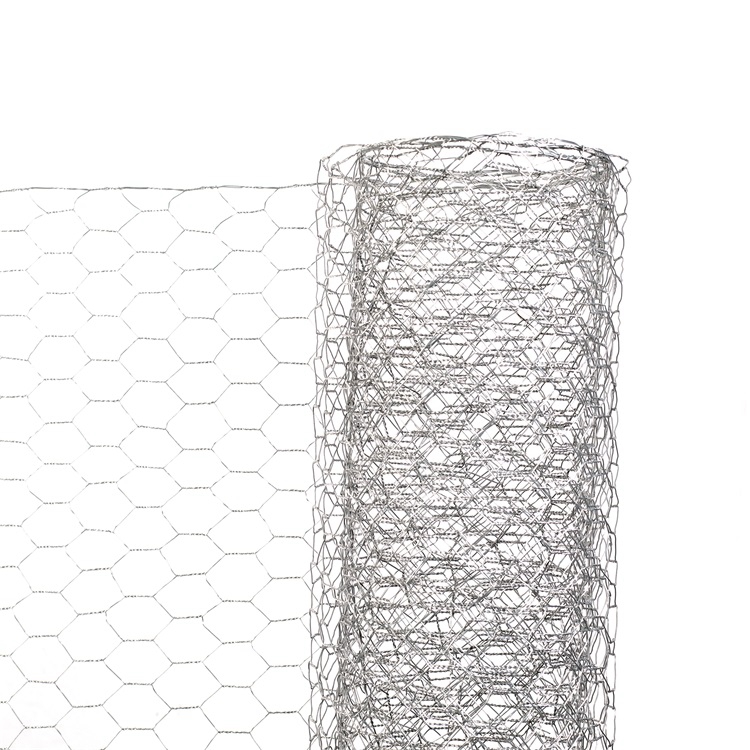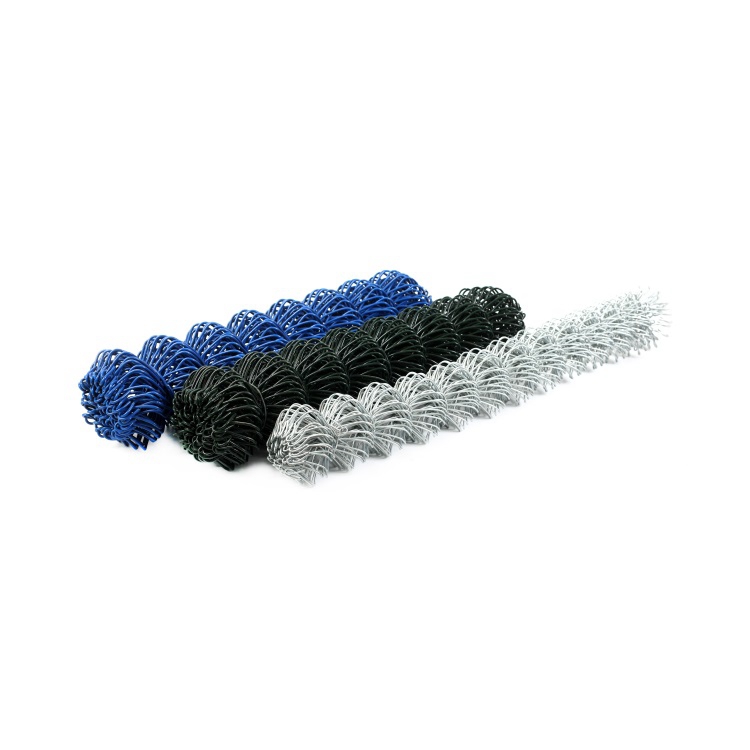Durable Stucco Wire Mesh for Strong Plaster & Stucco Bases
In the vast landscape of modern construction, the integrity and longevity of building facades are paramount. Central to achieving this durability, particularly in stucco and plaster applications, is the foundational support provided by specialized metal lath. Among the most critical and widely utilized materials in this category is Stucco Wire Mesh, an engineered product designed to enhance the strength, crack resistance, and overall performance of plastered surfaces. This comprehensive guide delves into the intricate world of Stucco Wire Mesh, exploring its industry trends, technical specifications, diverse applications, and inherent advantages, while also providing insights into manufacturing processes, selection criteria, and real-world impact.
Industry Trends and Market Dynamics of Stucco Wire Mesh
The global construction industry is experiencing dynamic shifts, driven by urbanization, sustainability initiatives, and the increasing demand for resilient building materials. Within this context, Stucco Wire Mesh plays a pivotal role. The market for stucco and plaster products, and consequently the demand for their reinforcement, is projected to grow significantly. According to a report by Grand View Research, the global lath and plaster market size was valued at USD 1.8 billion in 2022 and is expected to expand at a compound annual growth rate (CAGR) of 6.2% from 2023 to 2030. This growth is primarily fueled by rising construction activities in both residential and commercial sectors, particularly in emerging economies.
Key trends influencing the Stucco Wire Mesh market include:
- Sustainable Construction Practices: Growing emphasis on materials that contribute to energy efficiency and reduce environmental impact. While Stucco Wire Mesh itself isn't inherently "green" in terms of raw material sourcing, its contribution to the longevity and reduced maintenance of building envelopes aligns with sustainability goals by minimizing waste and resource consumption over a structure's lifecycle.
- Resilience Against Climate Change: Increased frequency of extreme weather events necessitates building materials that can withstand harsh conditions. Stucco Wire Mesh enhances the structural integrity of stucco finishes, making them more resistant to impacts, cracking from thermal expansion/contraction, and moisture penetration when correctly installed as part of a robust wall system.
- Technological Advancements in Manufacturing: Continuous improvements in galvanization techniques, mesh design, and automated production processes lead to higher quality, more consistent, and cost-effective Stucco Wire Mesh products. Innovations in self-furring designs, for instance, simplify installation and improve adhesion.
- Adoption of Building Codes and Standards: Strict adherence to international and local building codes (e.g., International Building Code (IBC), ASTM standards) drives demand for certified and high-performance Stucco Wire Mesh. This ensures safety, durability, and compliance in construction projects.
- Prefabrication and Modular Construction: While stucco is traditionally applied on-site, the rise of off-site construction methods sometimes integrates pre-finished panels, which still require durable substrates and reinforcement like Stucco Wire Mesh for their exterior finishes.
Technical Parameters and Specifications of Stucco Wire Mesh
Stucco Wire Mesh is not a monolithic product; it comes in various forms, each designed for specific applications and performance requirements. Understanding its technical parameters is crucial for proper material selection and optimal performance. The term "mesh" can refer to expanded metal lath, woven wire lath, or welded wire lath, each having distinct manufacturing processes and characteristics.
Types of Stucco Wire Mesh
- Expanded Metal Lath: This is the most common type. It's manufactured by slitting and stretching metal sheets (typically galvanized steel) into a diamond-shaped pattern. The stretching creates a continuous product without welds or interweaving, providing excellent keying for plaster. Common variants include diamond mesh lath, self-furring lath (with dimples or V-ribs to create a ¼-inch space from the substrate), and paper-backed lath.
- Woven Wire Lath: Made from individual wires woven together, similar to fabric. This type is less common for general stucco but can be found in specific applications where flexibility or very fine mesh is required. Often available in galvanized or stainless steel.
- Welded Wire Lath: Consists of wires welded together at their intersections to form a grid pattern. Often used for heavier-duty applications or where more rigid reinforcement is needed. Common for reinforcing concrete and sometimes used as a substrate for stone veneer or tile.
Key Specifications and Parameters
When specifying or purchasing Stucco Wire Mesh, several critical parameters must be considered to ensure suitability for the intended application and compliance with industry standards.

| Parameter | Description | Typical Range/Value | Relevant Standard |
|---|---|---|---|
| Material | Primary metal composition. Galvanized steel is most common due to corrosion resistance. Stainless steel offers superior corrosion resistance in harsh environments. | Galvanized Steel (G60, G90 coating), Stainless Steel (Type 304, 316) | ASTM A653/A653M (Galvanized Steel), ASTM A240/A240M (Stainless Steel) |
| Weight per Square Yard (or Meter) | Indicates the thickness and density of the mesh, directly impacting strength and rigidity. Heavier mesh provides greater reinforcement. | 1.75 lb/yd², 2.5 lb/yd², 3.4 lb/yd² (0.95 kg/m², 1.36 kg/m², 1.85 kg/m²) | ASTM C847 (Metal Lath), ASTM C1032 (Woven Wire Lath) |
| Mesh Opening Size | The dimensions of the apertures in the mesh. Crucial for proper keying of plaster and preventing excessive sag. | Typically 1/4" x 1/2" to 3/4" x 1.5" (Expanded), 1"x1" to 2"x2" (Welded/Woven) | Manufacturer Specifications, Industry Best Practices |
| Gauge (Wire Diameter) | For woven or welded mesh, refers to the thickness of the individual wires. Lower gauge numbers indicate thicker wires. | 16-20 gauge (1.29 - 0.81 mm) for woven/welded; equivalent for expanded | ASTM A641/A641M (Zinc-Coated Carbon Steel Wire) |
| Sheet/Roll Dimensions | Standard sizes for ease of installation and waste reduction. | 27" x 96" (sheets), 36" x 150' (rolls) or custom sizes | Industry Standard, Manufacturer Specific |
| Coating Type | Galvanization (hot-dip or electro) provides corrosion protection. | Hot-dip Galvanized (HDG), Electro-Galvanized (EG), mill-galvanized | ASTM A123/A123M (Hot-dip), ASTM A653/A653M (Mill) |
| Self-Furring Feature | Dimples or V-ribs integrated into the mesh to provide a precise ¼-inch furring away from the substrate, essential for proper stucco embedment. | Yes/No, ¼" furring depth | Industry Standard Best Practice |
These parameters are critical for specifying the correct Stucco Wire Mesh for a given project, ensuring compliance with local building codes, and achieving the desired performance and durability of the stucco system.
Application Scenarios of Stucco Wire Mesh
The versatility of Stucco Wire Mesh makes it indispensable across a wide array of construction applications, primarily focused on reinforcing stucco, plaster, and other cementitious coatings. Its ability to provide a stable, interconnected substrate and control cracking is invaluable in various building types and environments.
- Residential Buildings: From single-family homes to multi-story apartment complexes, Stucco Wire Mesh is widely used on exterior walls to create durable and aesthetically pleasing stucco finishes. It ensures the longevity of facades, protecting against weather elements and everyday wear and tear.
- Commercial Structures: Shopping centers, office buildings, hotels, and institutional facilities frequently utilize stucco as an exterior finish due to its design flexibility and cost-effectiveness. Stucco Wire Mesh is essential here to manage the larger surface areas and higher performance demands, preventing unsightly cracks that could compromise appearance and structural integrity.
- Restoration and Renovation Projects: In older buildings, particularly those with existing stucco or plaster, Stucco Wire Mesh is crucial for repairing, re-surfacing, or completely overhauling facades. It provides a reliable base for new plaster layers, even over uneven or deteriorating substrates.
- Exterior Insulation and Finish Systems (EIFS): While EIFS systems often use a fiberglass mesh, metal lath can be used as a substrate in hybrid systems or where a heavier, more impact-resistant base is required before the EIFS layers are applied.
- Interior Plaster Work: Although less common than drywall for new interior construction, Stucco Wire Mesh (or similar metal lath) is still used for traditional plaster finishes, especially in high-end residential, historical restorations, or soundproofing applications where a robust, dense wall is desired. It's particularly useful around openings, corners, or transitions where cracking is prone.
- Specialty Architectural Features: For curved walls, arches, cornices, and other complex architectural elements, Stucco Wire Mesh provides a flexible yet stable armature onto which plaster can be applied and shaped, allowing for intricate designs while maintaining structural integrity.
- Foundations and Basements: In some cases, Stucco Wire Mesh is incorporated into the parging layer applied to exterior foundation walls, providing additional protection against moisture and minor impacts.
In each of these scenarios, the primary role of Stucco Wire Mesh is to provide a mechanical key for the plaster or stucco, allowing it to adhere firmly, distribute stress evenly, and resist the natural forces of expansion, contraction, and settlement that lead to cracking. Its application directly contributes to the building's aesthetic appeal, structural integrity, and long-term durability.
Technical Advantages of Utilizing Stucco Wire Mesh
The integration of Stucco Wire Mesh into stucco and plaster systems offers a multitude of technical advantages that significantly enhance the performance and longevity of building envelopes. These benefits translate directly into reduced maintenance, increased safety, and superior aesthetic quality.
- Superior Crack Resistance: This is arguably the most significant advantage. The mesh acts as a reinforcement, distributing tensile stresses that naturally occur due to temperature fluctuations, moisture changes, and structural settling. Without adequate reinforcement, stucco is prone to unsightly spider-web cracking, which compromises both appearance and weather resistance. Stucco Wire Mesh creates a unified, reinforced matrix that effectively mitigates these forces, leading to a much more stable surface.
- Enhanced Adhesion and Mechanical Key: The open, textured surface of the mesh (especially expanded metal lath) provides an excellent mechanical "key" for the wet stucco mix. The plaster pushes through the openings and cures around the metal, creating a strong bond that prevents delamination and sagging, ensuring the stucco stays firmly attached to the substrate.
- Improved Impact Resistance: By reinforcing the plaster layer, Stucco Wire Mesh significantly increases its resistance to localized impacts from debris, accidental bumps, or vandalism. This is particularly important for ground-level applications or high-traffic areas.
- Uniform Stucco Thickness: Self-furring Stucco Wire Mesh, with its integrated dimples or V-ribs, ensures a consistent ¼-inch space between the mesh and the substrate. This critical gap allows for proper embedment of the mesh within the stucco, creating a uniform plaster thickness, which is vital for proper curing, strength, and appearance. ASTM C926 (Standard Specification for Application of Portland Cement-Based Plaster) specifically calls for proper embedment.
- Corrosion Resistance: High-quality Stucco Wire Mesh is typically made from galvanized steel, offering excellent protection against rust and corrosion. This is crucial as the mesh is embedded within a cementitious material that can retain moisture. For extreme environments (e.g., coastal areas, high humidity), stainless steel mesh provides superior long-term corrosion resistance, ensuring the reinforcement remains effective throughout the building's lifespan.
- Fire Resistance: While stucco itself offers a degree of fire resistance, the metal lath reinforcement further contributes to the overall non-combustibility of the wall assembly. Metal does not burn, and its presence can help maintain the integrity of the wall system during a fire event.
- Ease of Installation: Modern Stucco Wire Mesh products are designed for relatively straightforward installation. They are often lightweight, easy to cut with tin snips, and can be quickly fastened to various substrates (wood studs, sheathing, masonry) using appropriate fasteners. This efficiency helps to reduce labor costs and project timelines.
- Cost-Effectiveness: When considering the long-term benefits of durability and reduced maintenance, the initial investment in Stucco Wire Mesh is highly cost-effective. It prevents costly repairs associated with cracking, spalling, and moisture intrusion, ensuring the longevity of the stucco system.
Manufacturing Process of Stucco Wire Mesh
The production of Stucco Wire Mesh is a sophisticated industrial process that varies slightly depending on whether it's expanded, woven, or welded mesh. The most common type for stucco is expanded metal lath, and its process primarily involves specialized machinery that slits and stretches metal sheets.
Detailed Manufacturing Process for Expanded Stucco Wire Mesh
The manufacturing of expanded Stucco Wire Mesh (e.g., diamond mesh lath, self-furring lath) is a continuous and precise operation.
-
Raw Material Procurement and Inspection:
- High-quality galvanized steel coils are the primary raw material. These coils typically conform to standards such as ASTM A653/A653M for galvanized steel sheet.
- Upon arrival, material integrity is verified, including zinc coating thickness (e.g., G60 or G90 designations, meaning 0.60 or 0.90 ounces of zinc per square foot total on both sides) and steel grade.
-
Slitting:
- The large galvanized steel coils are unrolled and fed into a slitting machine. This machine precisely cuts the wide steel strip into narrower strips of the desired width, which will form the basis of the mesh sheets or rolls.
- The slitting process is crucial for maintaining consistent sheet dimensions.
-
Expanding (Slitting and Stretching):
- This is the core process for expanded metal lath. The pre-slit steel strips are fed into an expanding machine.
- The machine uses a series of specialized blades or knives that simultaneously slit and stretch the metal. The slits are offset, and as the metal is stretched, the slits open up into the characteristic diamond-shaped pattern.
- The stretching action creates a strong, unitary piece of mesh without any welds or joints, making it highly robust.
- For self-furring lath, the expanding machine is equipped with rollers or dies that simultaneously emboss dimples or V-ribs into the mesh, creating the precise ¼-inch furring depth required.
- This process is continuous and highly automated, ensuring consistent mesh opening size and overall dimensions.
-
Flattening (Optional):
- Some expanded metal lath products undergo a flattening process where they are rolled to reduce the thickness and create a smoother surface. This is less common for stucco applications where a rough surface is desirable for keying.
-
Corrugating (for Rib Lath, if applicable):
- For certain types of lath like rib lath, the mesh is passed through a corrugating machine that forms longitudinal V-shaped ribs. These ribs provide additional stiffness and allow for wider fastener spacing.
-
Cutting to Size:
- The expanded mesh, now in its final form, is then cut into standard sheet sizes (e.g., 27" x 96") or rolled into specified lengths (e.g., 150-foot rolls).
- Precision cutting ensures dimensional accuracy for ease of installation on job sites.
-
Quality Control and Inspection:
- Throughout the process, rigorous quality control checks are performed.
- Material Inspection: Verification of galvanized coating thickness (e.g., using X-ray fluorescence or gravimetric methods) and adherence to ASTM A653/A653M standards.
- Dimensional Accuracy: Regular checks on mesh opening size, sheet/roll dimensions, and furring depth (for self-furring lath) to ensure consistency and compliance with ASTM C847 (Standard Specification for Metal Lath).
- Visual Inspection: Checking for defects such as burrs, uneven expansion, or damage to the galvanization.
- Weight per Square Yard/Meter: Measuring actual weight to ensure it meets specified values (e.g., 2.5 lb/yd²).
- Adherence to Standards: Ensuring the final product meets industry standards like ASTM C847, ASTM C1032 (for woven wire lath), and local building codes (e.g., International Building Code (IBC) requirements for lath).
-
Packaging:
- Finished Stucco Wire Mesh sheets or rolls are stacked, bundled, and securely packaged, often in moisture-resistant wraps, to prevent damage and corrosion during storage and transportation.
- Proper labeling with product specifications, manufacturer information, and compliance standards is applied.
The entire process is optimized for efficiency and precision, ensuring that the Stucco Wire Mesh produced offers consistent quality, optimal performance, and a long service life of 50 years or more when properly installed as part of a well-designed stucco system. The lifespan is heavily influenced by the quality of galvanization or use of stainless steel, and the environmental conditions it is exposed to. For instance, in a dry, temperate climate, a standard galvanized mesh might easily exceed 50 years, whereas in a corrosive coastal environment, stainless steel might be required for similar longevity.

Manufacturer Comparison and Selection Criteria
Choosing the right manufacturer for Stucco Wire Mesh is as critical as selecting the product itself. While direct naming of competitors is beyond the scope, focusing on key selection criteria allows for informed decision-making, ensuring that the chosen supplier provides reliable, high-quality products and services. When evaluating potential manufacturers for Stucco Wire Mesh, consider the following factors:
- Product Quality and Compliance:
- Material Standards: Does the manufacturer adhere to established industry standards such as ASTM C847 (for metal lath), ASTM C1032 (for woven wire lath), ASTM A653/A653M (for galvanized steel), and ASTM A240/A240M (for stainless steel)? Look for certifications and declarations of conformity.
- Consistency: Are the mesh openings, gauge, weight, and dimensions consistent across batches? Inconsistent products can lead to installation issues and compromised performance.
- Corrosion Protection: What type and thickness of galvanization or stainless steel grade is used (e.g., G60, G90, Type 304/316)? This is paramount for longevity.
- Manufacturing Capabilities and Technology:
- Modern Facilities: Does the manufacturer utilize advanced machinery and automated processes for precision slitting, expanding, and cutting? This often indicates higher quality and efficiency.
- Quality Control: What internal QC protocols are in place? Are there robust testing procedures for material properties, dimensions, and coatings? ISO 9001 certification is a good indicator of a strong quality management system.
- Customization and Product Range:
- Can the manufacturer provide custom sizes, different weights per square yard, or specialized features (e.g., custom furring depths) if needed for unique project requirements?
- Do they offer a full range of accessories, such as corner beads, casing beads, and expansion joints, which are integral to a complete stucco system?
- Reputation and Experience:
- Industry Standing: How long has the company been in business? A long-standing presence often indicates reliability and a deep understanding of the market.
- Customer Feedback and Case Studies: Look for testimonials, reviews, and examples of successful projects where their Stucco Wire Mesh was used.
- Industry Partnerships: Are they members of relevant industry associations (e.g., The Stucco Manufacturers Association, National Plastering Industries)? This shows commitment to industry best practices.
- Logistics and Support:
- Delivery Timelines: Can they consistently meet project deadlines and deliver materials efficiently?
- Technical Support: Do they offer knowledgeable technical assistance for product selection, installation guidance, and troubleshooting?
- Warranty and Guarantees: What are their terms for product defects or performance guarantees?
By rigorously evaluating these criteria, clients can select a Stucco Wire Mesh manufacturer that not only provides a high-quality product but also acts as a reliable partner throughout the construction process. Fivestar Metals, with its commitment to quality and comprehensive product range, serves as a prime example of a manufacturer dedicated to meeting these stringent industry requirements. Our adherence to ASTM standards and focus on client-specific solutions underscore our position as a trusted supplier.
Customization Solutions for Stucco Wire Mesh
While standard sizes and specifications of Stucco Wire Mesh meet the needs of most projects, certain architectural designs or specialized applications require tailored solutions. A reputable manufacturer offers a degree of customization to ensure optimal fit and performance.
- Custom Dimensions: For large-scale projects or specific panelized systems, manufacturers can often provide mesh in custom sheet sizes or roll lengths to minimize waste and streamline installation. This can be particularly beneficial for modular construction where specific panel dimensions are critical.
- Varied Material Grades and Coatings: Beyond standard galvanized steel, custom orders might include specific stainless steel grades (e.g., Type 316 for extreme marine environments where superior corrosion resistance is paramount) or enhanced galvanized coatings (e.g., G100 or heavier, if available and required by unique project specifications).
- Specialized Weights and Gauges: Depending on the stucco system's design load, substrate type, or desired impact resistance, a manufacturer might be able to produce mesh with a slightly higher or lower weight per square yard or different wire gauges for woven/welded variants.
- Custom Furring Depths: While ¼-inch is standard for self-furring lath, projects utilizing thicker stucco coats or specific drainage planes might benefit from custom furring dimples that create a slightly larger air gap, optimizing moisture management.
- Integrated Components: Some manufacturers can provide Stucco Wire Mesh pre-attached with specific building papers or membranes, creating a unified weather-resistive barrier and lath system, simplifying on-site application.
These customization options reflect a manufacturer's flexibility and commitment to addressing unique client needs, contributing significantly to project efficiency and performance.
Application Cases and Success Stories
The real-world impact of high-quality Stucco Wire Mesh is best demonstrated through its successful application in diverse construction projects. While specific project names cannot be provided for confidentiality, the following examples illustrate common scenarios where the judicious use of Stucco Wire Mesh has led to superior outcomes:
- Large-Scale Residential Development (Coastal Region): A multi-unit residential complex located near the coastline faced challenges with traditional stucco systems succumbing to efflorescence and cracking due to salt air and thermal cycling. By specifying a heavier gauge, Type 316 stainless steel Stucco Wire Mesh from a certified supplier, the development achieved a facade that has remained pristine and crack-free for over a decade, significantly outperforming previous attempts. This proactive material selection minimized long-term maintenance costs and enhanced property value.
- Historic Building Renovation (Urban Center): An early 20th-century civic building undergoing extensive renovation required a durable and historically accurate plaster finish for its exterior. The challenge was to reinforce the new plaster layers over an uneven original masonry substrate without compromising the building's historic character. A self-furring, hot-dip galvanized Stucco Wire Mesh was chosen, providing the necessary mechanical key and consistent plaster thickness. The result was a facade that replicated the original aesthetic while offering modern durability and crack resistance, approved by historical preservation societies.
- Commercial Retail Outlet (High-Traffic Area): A new retail facility designed with expansive stucco panels needed exceptional impact resistance to withstand potential damage from shopping carts, vehicles, and general foot traffic. The project team opted for a 3.4 lb/yd² expanded Stucco Wire Mesh, which provided superior reinforcement. After several years of operation, the stucco surfaces show no signs of cracking or significant impact damage, testament to the robust underlying mesh system. This minimized repair costs and maintained the building's appealing appearance, crucial for commercial success.
- Educational Facility (Seismic Zone): A school building in an active seismic zone required robust structural integrity for all components, including its exterior stucco finish. The engineers specified a high-tensile strength, galvanized Stucco Wire Mesh installed with a rigorous fastening schedule. This reinforcement helped the stucco system flex and absorb minor movements without cracking, demonstrating the mesh's crucial role in enhancing the resilience of non-structural elements in earthquake-prone regions.
These examples underscore the critical role of Stucco Wire Mesh in ensuring the longevity, aesthetic appeal, and structural integrity of diverse construction projects. Experience gathered from hundreds of similar projects, often reflected in contractor feedback and long-term performance assessments, consistently affirms the value of selecting the right mesh for the job. Our company has served the metal industry for over a decade, accumulating a wealth of experience in providing reliable Stucco Wire Mesh solutions that stand the test of time and various environmental conditions.
Frequently Asked Questions (FAQ) about Stucco Wire Mesh
Understanding the nuances of Stucco Wire Mesh is vital for builders, architects, and homeowners. Here are answers to common professional and technical questions:
-
What is the primary purpose of Stucco Wire Mesh?
The primary purpose of Stucco Wire Mesh is to serve as a reinforcing base for stucco, plaster, and other cementitious wall finishes. It provides a mechanical key for the wet plaster mix to adhere to, controls cracking by distributing tensile stresses, and enhances the overall strength, impact resistance, and durability of the stucco system. It prevents the stucco from sagging or delaminating and helps manage dimensional changes due to temperature and moisture.
-
What materials is Stucco Wire Mesh typically made from, and why?
Stucco Wire Mesh is predominantly made from galvanized steel, which is carbon steel coated with a layer of zinc. The zinc coating provides excellent corrosion resistance, protecting the steel from rust and ensuring the mesh's longevity within the alkaline environment of stucco. For applications in highly corrosive environments, such as coastal regions or areas with high chemical exposure, stainless steel (e.g., Type 304 or 316) is used for superior, long-term corrosion protection.
-
What does "self-furring" mean for Stucco Wire Mesh?
Self-furring Stucco Wire Mesh features integrated dimples, embossed patterns, or V-ribs that create a precise ¼-inch (6.35 mm) space between the mesh and the substrate (e.g., sheathing or framing). This furring space is critical because it ensures that the mesh is properly embedded within the stucco base coat, allowing the stucco to fully encapsulate the mesh and create a strong, uniform bond, which is essential for preventing cracks and delamination.
-
How is Stucco Wire Mesh installed, and what are the key considerations?
Stucco Wire Mesh is typically attached to the substrate (e.g., wood studs, plywood sheathing, or masonry) using corrosion-resistant fasteners like galvanized staples, nails, or screws. Key considerations include: ensuring proper overlap at seams (usually 1-inch minimum at ends, ½-inch at sides for expanded lath, as per ASTM C1063), maintaining consistent furring depth, installing over a suitable weather-resistive barrier, and using appropriate accessory trim (corner beads, casing beads, expansion joints) for a complete system. Fastener spacing must comply with local building codes and ASTM C1063 (Standard Practice for Installation of Lathing and Furring for Cement Plaster).
-
What are the common weight specifications for Stucco Wire Mesh, and what do they indicate?
Common weight specifications for expanded Stucco Wire Mesh include 1.75 lb/yd², 2.5 lb/yd², and 3.4 lb/yd². These weights indicate the mass of the mesh per square yard, reflecting its thickness and rigidity. A higher weight (e.g., 3.4 lb/yd²) means a thicker, stronger mesh that provides greater reinforcement and impact resistance, often used for demanding applications or where wider stud spacing is present. Lower weights are suitable for lighter applications or where tighter stud spacing allows for less rigid mesh.
-
What industry standards apply to Stucco Wire Mesh?
Several key industry standards govern the manufacturing and installation of Stucco Wire Mesh: ASTM C847 (Standard Specification for Metal Lath) covers expanded metal lath; ASTM C1032 (Standard Specification for Woven Wire Plaster Base) covers woven wire lath; ASTM C1063 (Standard Practice for Installation of Lathing and Furring for Cement Plaster) provides installation guidelines. Additionally, material standards like ASTM A653/A653M (for galvanized steel) and ASTM A240/A240M (for stainless steel) ensure the quality of the raw materials.
-
What is the typical lifespan of Stucco Wire Mesh, and how does it contribute to the overall building lifespan?
When properly installed and embedded in stucco, high-quality galvanized Stucco Wire Mesh can have a service life exceeding 50 years, often matching or exceeding the lifespan of the stucco itself. Stainless steel mesh can last even longer in harsh conditions. It significantly contributes to the overall building lifespan by preventing premature cracking, spalling, and moisture penetration of the stucco facade, thereby protecting the underlying wall assembly from environmental degradation and reducing the need for costly repairs and re-plastering over decades.
Delivery Cycle, Quality Assurance, and Customer Support
At Fivestar Metals, our commitment extends beyond merely supplying high-quality Stucco Wire Mesh. We understand that timely delivery, stringent quality assurance, and responsive customer support are integral to our clients' success and build lasting trust.
- Delivery Cycle: We maintain efficient production schedules and robust logistics networks to ensure prompt delivery of Stucco Wire Mesh products. For standard orders, typical lead times range from 7 to 14 business days, depending on order volume and destination. Expedited shipping options are available for urgent project requirements. We work closely with our clients to coordinate delivery schedules that align with their construction timelines, minimizing costly delays.
- Quality Assurance and Warranty: Our Stucco Wire Mesh products undergo rigorous quality control at every stage of the manufacturing process, from raw material inspection (conforming to ASTM A653/A653M for galvanized steel and ASTM A240/A240M for stainless steel) to final product testing (meeting ASTM C847 and ASTM C1032 specifications). We are ISO 9001 certified, guaranteeing a consistent and reliable quality management system. We stand behind the quality of our products with a comprehensive warranty against manufacturing defects, ensuring that our Stucco Wire Mesh performs as expected for its intended lifespan, typically 50+ years under normal conditions, when installed correctly.
- Customer Support: Our dedicated customer support team is available to assist with all inquiries, from product selection and technical specifications to order tracking and after-sales support. We provide expert guidance on choosing the right Stucco Wire Mesh for specific applications, offer installation best practices, and address any concerns promptly. Our aim is to foster long-term partnerships built on trust and mutual success.
Concluding Thoughts and Further Resources
The selection and proper application of Stucco Wire Mesh are foundational to creating durable, aesthetically pleasing, and long-lasting stucco and plaster finishes. As evidenced by its widespread adoption across diverse construction projects and its adherence to stringent industry standards, Stucco Wire Mesh is more than just a building material; it's a critical component that ensures the integrity and resilience of building envelopes for decades. Its ability to mitigate cracking, enhance adhesion, and provide robust reinforcement makes it an indispensable asset in modern construction. The continuous advancements in manufacturing processes and material science ensure that Stucco Wire Mesh will remain a cornerstone of high-performance facade systems.
For those seeking to delve deeper into the technical aspects, installation guidelines, and ongoing research related to stucco and metal lath, the following resources provide valuable insights:
- Stucco Manufacturers Association (SMA): A non-profit trade association dedicated to the highest quality stucco industry standards. https://stuccomfgassoc.com/
- Portland Cement Association (PCA): Offers comprehensive resources on cement and concrete applications, including stucco. https://www.cement.org/
- ASTM International: Provides standards for materials, products, systems, and services, including those relevant to metal lath and plaster. Specific standards to search for include ASTM C847, C1032, and C1063. https://www.astm.org/
- Construction Specifier Magazine: Often publishes articles and case studies on building envelope technologies and materials. https://www.constructionspecifier.com/
- Journal of Architectural Engineering (American Society of Civil Engineers - ASCE): Features peer-reviewed research on various aspects of building performance and materials. Access via ASCE Library or university databases.
-
The Ultimate Guide to Premium Quality Field Fence Solutions
NewsAug.12,2025
-
The Essential Guide to Premium Square Wire Mesh Solutions
NewsAug.12,2025
-
The Essential Guide to Hexagonal Wire Netting Farm Fencing
NewsAug.12,2025
-
Premium Continuous Deck Rail Slab Bolster Solutions
NewsAug.12,2025
-
High-Performance Aluminum Tie Wire Reel for Construction Applications
NewsAug.12,2025
-
Crafted Premium Galvanized Hexagonal Gabion Wire Mesh Solutions
NewsAug.12,2025







